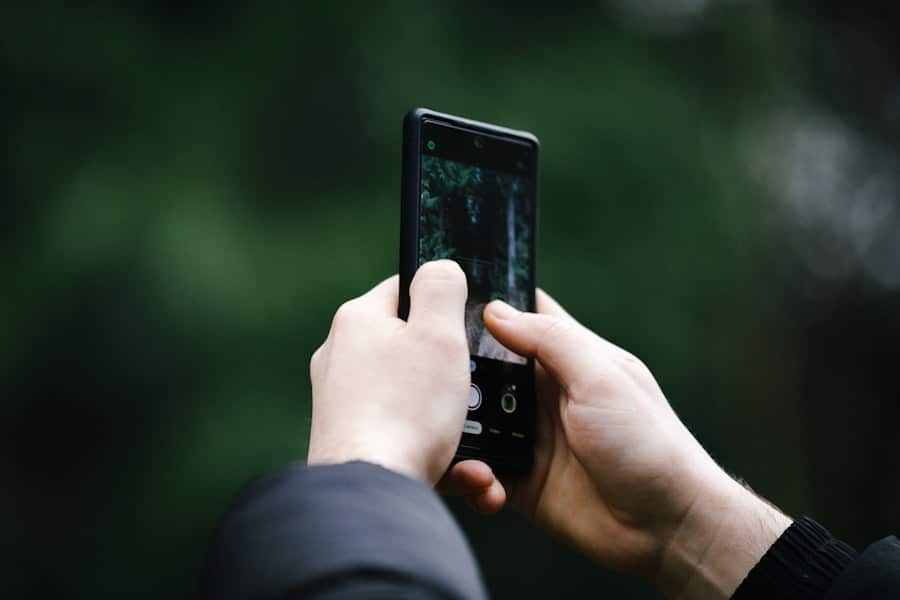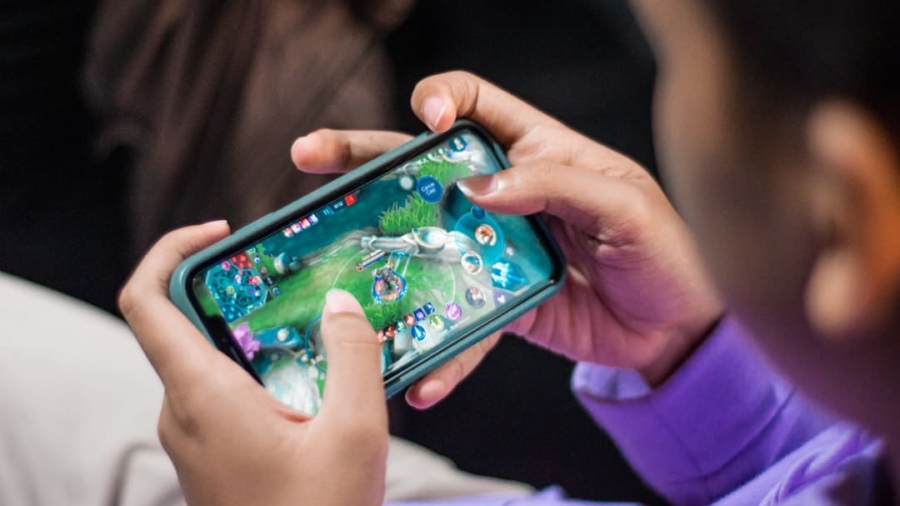Mobile augmented reality (AR) games have emerged as a transformative force in the gaming industry, blending the digital and physical worlds in ways that captivate users and enhance their experiences. By overlaying digital information onto the real world through smartphones and tablets, AR games create immersive environments that engage players in unique ways. This technology has evolved significantly over the past decade, with notable examples like Pokémon GO and Ingress demonstrating the potential of AR to create interactive experiences that encourage exploration and social interaction.
The integration of AR into mobile gaming not only enhances entertainment but also opens up new avenues for education, particularly in subjects like geography. The appeal of mobile AR games lies in their ability to make learning dynamic and interactive. Unlike traditional educational methods that often rely on textbooks and lectures, AR games provide a hands-on approach that can stimulate curiosity and foster a deeper understanding of complex concepts.
As students navigate their physical surroundings while engaging with digital content, they develop spatial awareness and critical thinking skills. This innovative approach to learning is particularly relevant in geography education, where understanding spatial relationships and cultural contexts is essential. By leveraging the capabilities of mobile AR games, educators can create rich, engaging learning experiences that resonate with today’s tech-savvy students.
Key Takeaways
- Mobile AR games combine virtual elements with the real world, creating an immersive gaming experience.
- Using mobile AR games in education can enhance student engagement and motivation, leading to improved learning outcomes.
- Geography can be incorporated into mobile AR games to provide interactive and hands-on learning experiences for students.
- Examples of mobile AR games that teach geography include Pokémon Go, Ingress, and Geocaching.
- Mobile AR games can be used to assess student learning through interactive quizzes, challenges, and real-world problem-solving tasks.
The Benefits of Using Mobile AR Games in Education
The integration of mobile AR games into educational settings offers numerous benefits that can enhance the learning experience for students. One of the most significant advantages is the ability to engage learners in a way that traditional methods often fail to achieve. Mobile AR games can transform mundane lessons into exciting adventures, capturing students’ attention and motivating them to participate actively in their education.
This heightened engagement can lead to improved retention of information, as students are more likely to remember concepts they have experienced firsthand rather than those they have merely read about or heard in a lecture.
This social aspect of learning is crucial, as it fosters communication skills and teamwork, which are essential competencies in today’s interconnected world.
For instance, when students collaborate on an AR scavenger hunt that requires them to find geographical landmarks or historical sites, they not only learn about the subject matter but also develop interpersonal skills as they discuss strategies and share insights. This collaborative environment can lead to a more inclusive classroom where diverse perspectives are valued and explored.
Incorporating Geography into Mobile AR Games

Incorporating geography into mobile AR games involves creating experiences that allow players to explore spatial relationships, cultural contexts, and environmental factors in an interactive manner. One effective approach is to design games that require players to navigate real-world locations while interacting with digital content that provides information about those places. For example, an AR game could guide players through a city, prompting them to visit specific landmarks while offering historical facts, geographical data, or cultural insights at each stop.
This not only reinforces geographical knowledge but also encourages players to appreciate the significance of their surroundings. Another method for integrating geography into mobile AR games is through the use of challenges that require players to apply their knowledge in practical scenarios. For instance, a game could simulate natural disasters, prompting players to strategize how to respond based on geographical factors such as terrain, climate, and population density.
By engaging with these scenarios, students can develop critical thinking skills and a deeper understanding of how geography influences human behavior and decision-making. This experiential learning approach allows students to connect theoretical concepts with real-world applications, making geography more relevant and impactful.
Examples of Mobile AR Games that Teach Geography
Several mobile AR games have successfully integrated geography education into their gameplay mechanics, providing valuable learning experiences for players. One prominent example is “Pokémon GO,” which encourages players to explore their neighborhoods and local parks while capturing virtual creatures. As players traverse different geographical areas, they encounter various Pokémon species that are often tied to specific environments or climates.
This aspect of the game not only promotes physical activity but also introduces players to the concept of biodiversity and the importance of preserving natural habitats. Another noteworthy example is “Geocaching,” an outdoor recreational activity that utilizes GPS technology to create a global treasure hunt. Players use their mobile devices to locate hidden containers, known as geocaches, which are often placed in significant geographical locations.
Each geocache typically contains a logbook for players to sign and may include educational materials about the surrounding area. This game fosters an appreciation for geography by encouraging participants to explore diverse landscapes while learning about local history and culture. “Zombies, Run!” is another innovative mobile AR game that combines fitness with geography education.
Players assume the role of a runner in a post-apocalyptic world while completing missions that require them to navigate real-world locations. As they run through different environments, they encounter various challenges related to geography, such as finding safe routes or identifying landmarks. This game not only promotes physical health but also encourages players to engage with their surroundings in a meaningful way.
Engaging Students with Mobile AR Games
Engaging students through mobile AR games requires thoughtful design and implementation that aligns with educational objectives while appealing to learners’ interests. One effective strategy is to incorporate storytelling elements into the gameplay experience. By weaving narratives into the game mechanics, educators can create immersive scenarios that resonate with students on an emotional level.
For instance, an AR game could follow a character on a quest to save endangered species by exploring different ecosystems and learning about the geographical factors affecting those habitats. This narrative-driven approach can captivate students’ imaginations and motivate them to delve deeper into the subject matter. Additionally, incorporating gamification elements can enhance student engagement by introducing competition and rewards into the learning process.
Features such as leaderboards, badges, and achievement systems can incentivize students to participate actively and strive for mastery of geographical concepts. For example, an AR game could challenge students to complete geography-related tasks within a set timeframe, rewarding those who demonstrate exceptional knowledge or creativity with virtual prizes or recognition. This competitive aspect can foster a sense of accomplishment and encourage students to take ownership of their learning journey.
Assessing Student Learning through Mobile AR Games

Assessing student learning in the context of mobile AR games presents unique opportunities for educators to evaluate understanding in real-time while providing immediate feedback. Traditional assessment methods often rely on standardized tests or written assignments, which may not accurately reflect a student’s grasp of geographical concepts or their ability to apply knowledge in practical situations. In contrast, mobile AR games can offer dynamic assessment tools that allow educators to observe student interactions and decision-making processes during gameplay.
For instance, educators can track player progress through analytics provided by the game platform, gaining insights into areas where students excel or struggle. This data-driven approach enables teachers to tailor instruction based on individual needs, providing targeted support for those who may require additional assistance. Furthermore, incorporating reflective practices into gameplay—such as prompting students to discuss their strategies or share what they learned—can deepen their understanding and encourage metacognition.
Another effective assessment strategy involves using project-based assessments alongside mobile AR games. After completing a game or specific challenges within it, students could be tasked with creating presentations or reports that synthesize their learning experiences. This approach not only reinforces geographical knowledge but also allows students to demonstrate their understanding creatively and collaboratively.
Overcoming Challenges in Implementing Mobile AR Games in Geography Education
While the potential benefits of mobile AR games in geography education are significant, several challenges must be addressed for successful implementation. One primary concern is access to technology; not all students may have smartphones or tablets capable of running advanced AR applications. To mitigate this issue, schools could consider providing devices for student use or developing partnerships with local organizations that can support technology access.
Professional development programs should focus on equipping teachers with the skills necessary to design engaging lessons that leverage AR technology while aligning with curriculum standards. Additionally, educators must be prepared to address potential technical issues that may arise during gameplay, ensuring a smooth experience for students.
Furthermore, there is a need for careful consideration of content quality and educational value when selecting mobile AR games for classroom use. Not all games are created equal; some may prioritize entertainment over educational outcomes. Educators should conduct thorough evaluations of available games, seeking those that provide accurate information and meaningful learning experiences while maintaining student engagement.
The Future of Mobile AR Games in Geography Education
The future of mobile AR games in geography education holds immense promise as technology continues to evolve and become more accessible. As educators increasingly recognize the value of interactive learning experiences, mobile AR games will likely play a pivotal role in shaping how geography is taught in classrooms around the world. By fostering engagement, collaboration, and critical thinking skills among students, these innovative tools can transform traditional educational paradigms.
As advancements in augmented reality technology continue to emerge—such as improved graphics, enhanced interactivity, and more sophisticated data integration—the potential applications for geography education will expand even further. Educators will have the opportunity to create increasingly immersive experiences that allow students to explore complex geographical concepts in ways previously unimaginable. Ultimately, the integration of mobile AR games into geography education represents a significant step toward creating more engaging and effective learning environments for future generations.
In recent years, the integration of technology in education has opened up new avenues for interactive learning, particularly through mobile augmented reality (AR) games that teach geography in schools. These innovative tools not only engage students but also enhance their spatial understanding and cultural awareness. A related article that explores the intersection of technology and education is “The Best Apple Tablets 2023,” which discusses the latest advancements in tablet technology that can support educational apps and AR games. For more information, you can read the full article by following this link.
FAQs
What are mobile AR games?
Mobile AR games are games that use augmented reality technology to overlay digital elements onto the real world through a mobile device’s camera. This allows players to interact with virtual objects and characters in a real-world environment.
How do mobile AR games teach geography in schools?
Mobile AR games can teach geography in schools by incorporating real-world maps and locations into the game’s virtual environment. Players can explore different geographical locations, learn about landmarks, and understand the layout of different regions through interactive gameplay.
What are the benefits of using mobile AR games to teach geography in schools?
Using mobile AR games to teach geography in schools can make learning more engaging and interactive for students. It allows them to explore and interact with geographical concepts in a hands-on way, which can enhance their understanding and retention of the material.
Are there any specific mobile AR games designed to teach geography in schools?
Yes, there are specific mobile AR games designed to teach geography in schools, such as “World Brush” and “Geocaching.” These games incorporate geographical elements and challenges to help students learn about different locations and landmarks around the world.
How can teachers incorporate mobile AR games into their geography lessons?
Teachers can incorporate mobile AR games into their geography lessons by using them as interactive learning tools during class time or as part of a homework assignment. They can also use these games to supplement traditional teaching methods and provide students with a more immersive learning experience.

